During the recent rebuilding of King’s Cross, workers found a large, locked trunk. When opened, the trunk contained files and papers on civil defence—how the Eastern Region of British Railways would have kept the railways operating if there had been a nuclear attack on Britain.
These documents are probably unique—the other regions of British Railways would have kept records on their own preparations for World War 3, but it is not believed that material from any other region has survived.
Almost all the files in the collection are described as “Secret” or “Top Secret”.
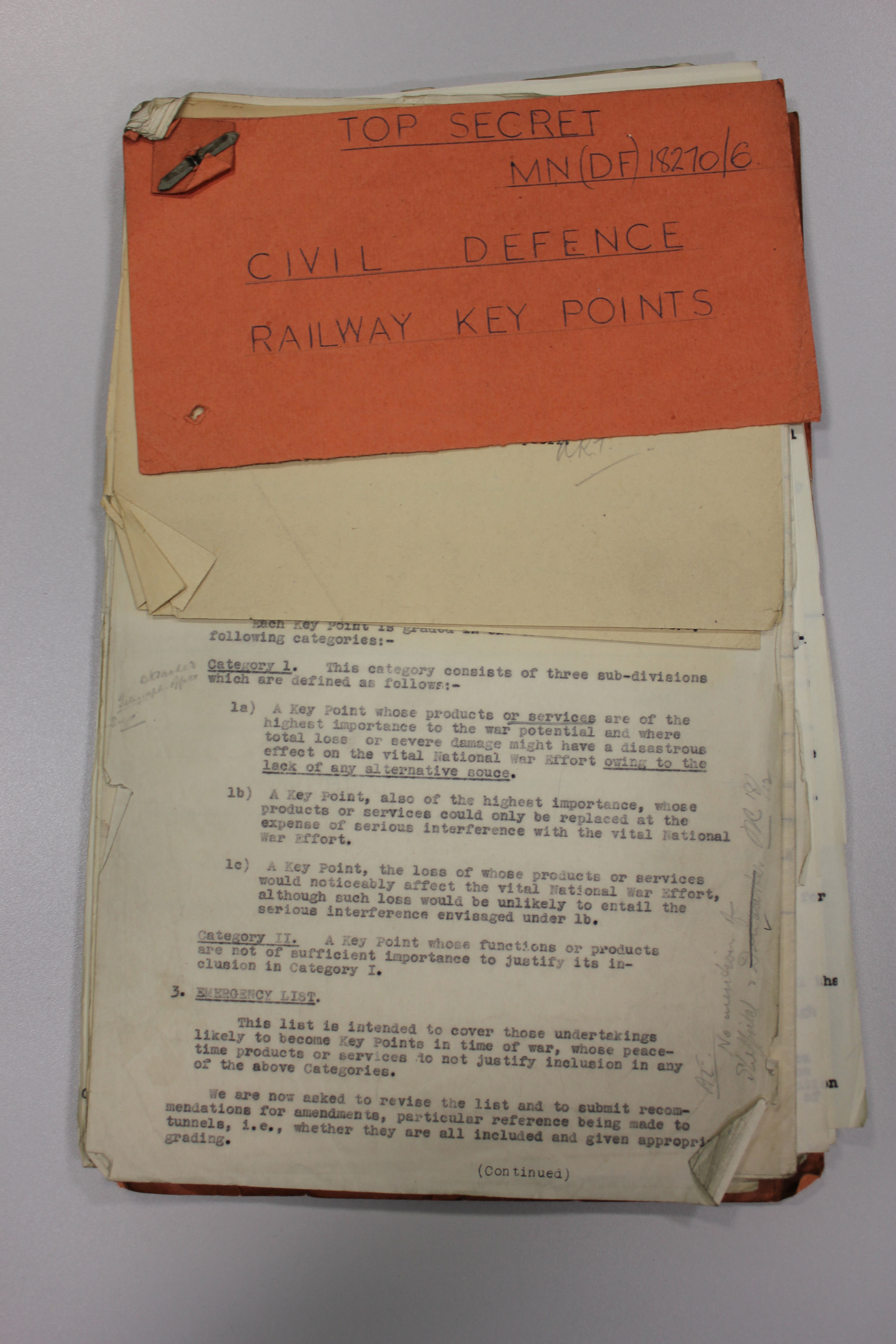
Plans for emergency control shelters, from where operations could be directed in the aftermath of a nuclear attack, were also drawn up.
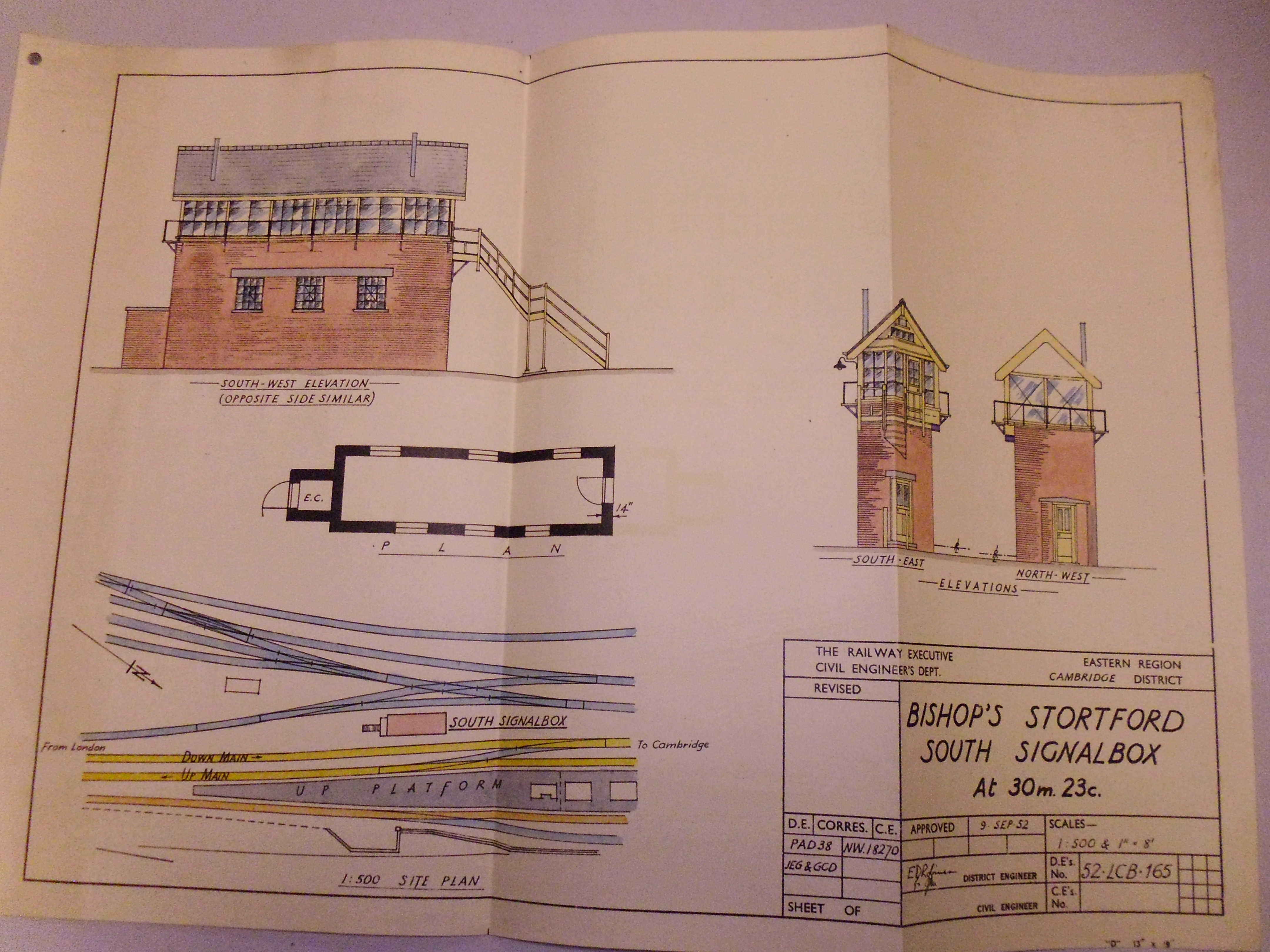
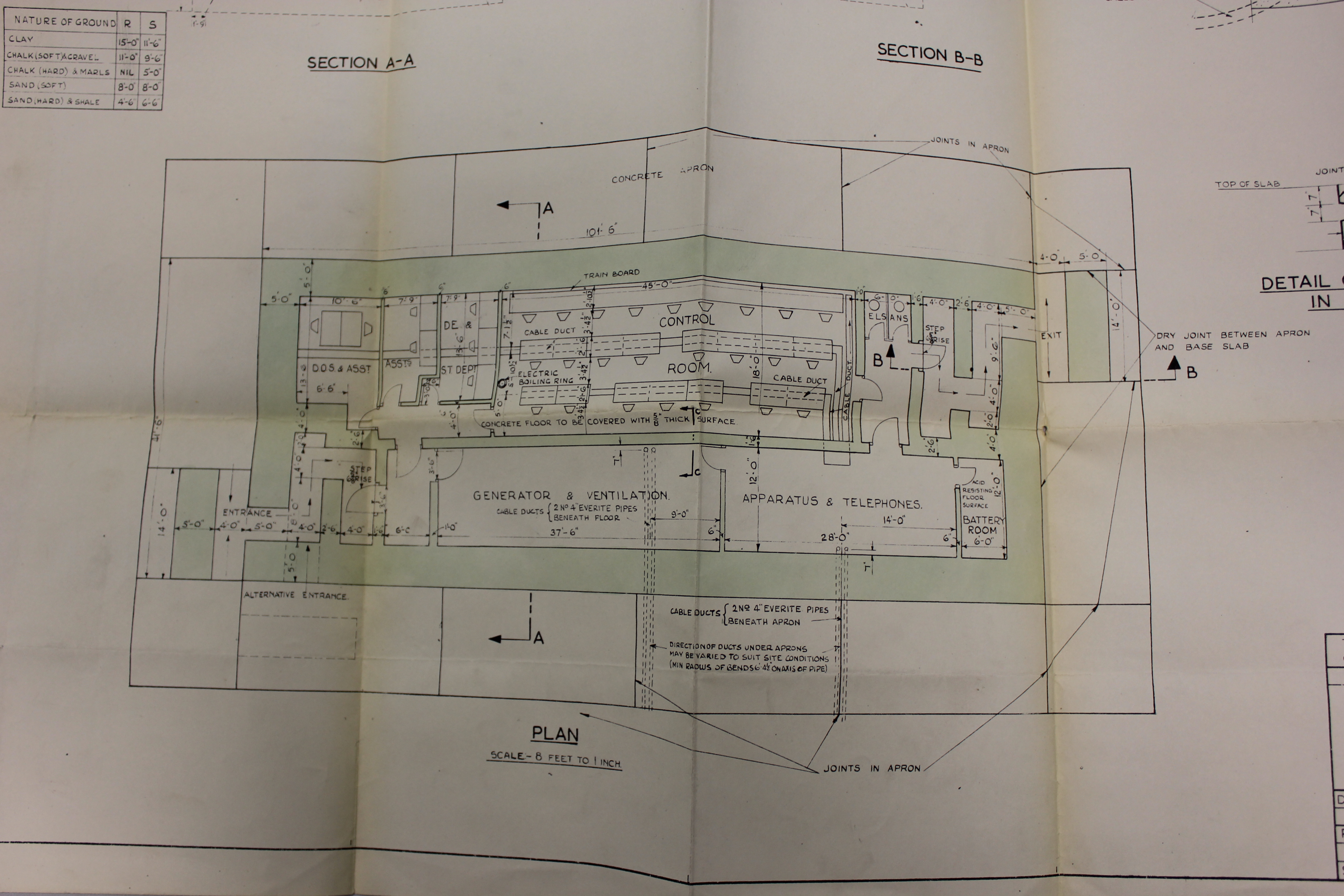
The files include a lot of material on staff training. This poster was used to promote civil defence to Eastern Region employees:
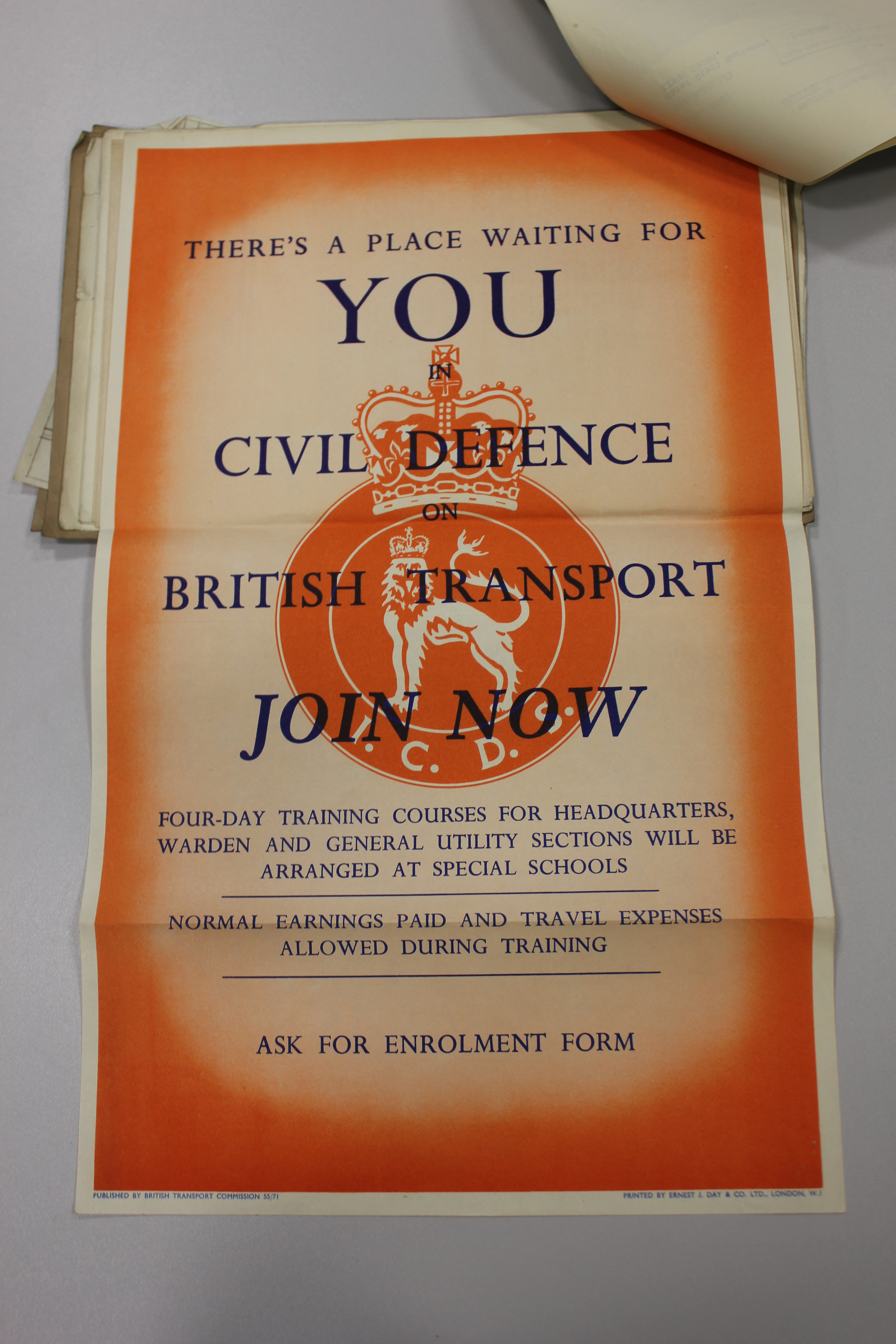
Two workers were sent to the army camp at Longmoor, Hampshire, on a training course in how to repair track and bridges in emergency, wartime conditions. The photos these trainees took on the course are also in the collection:
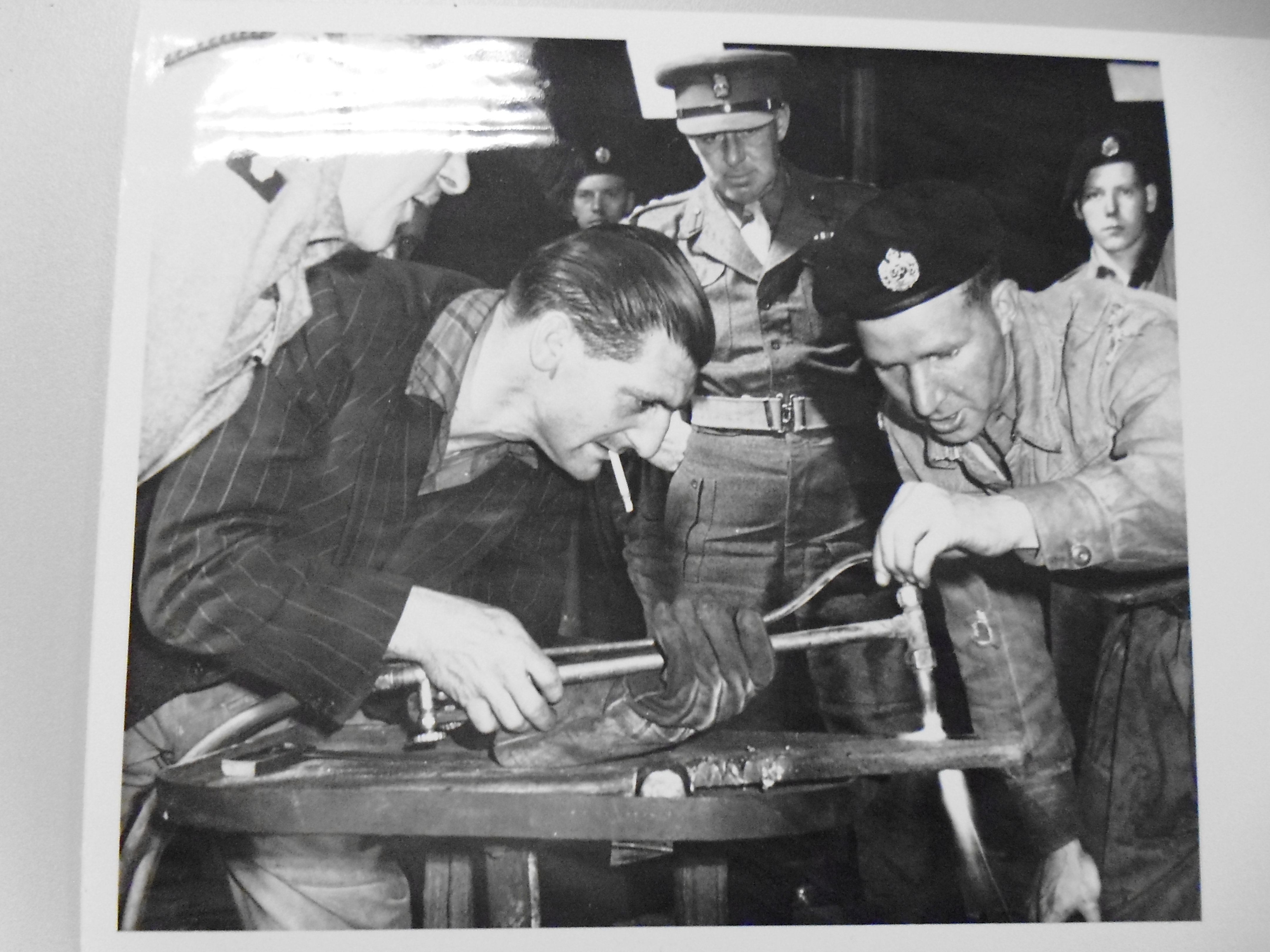
Regional headquarters built up a large back catalogue of various civil defence magazines:
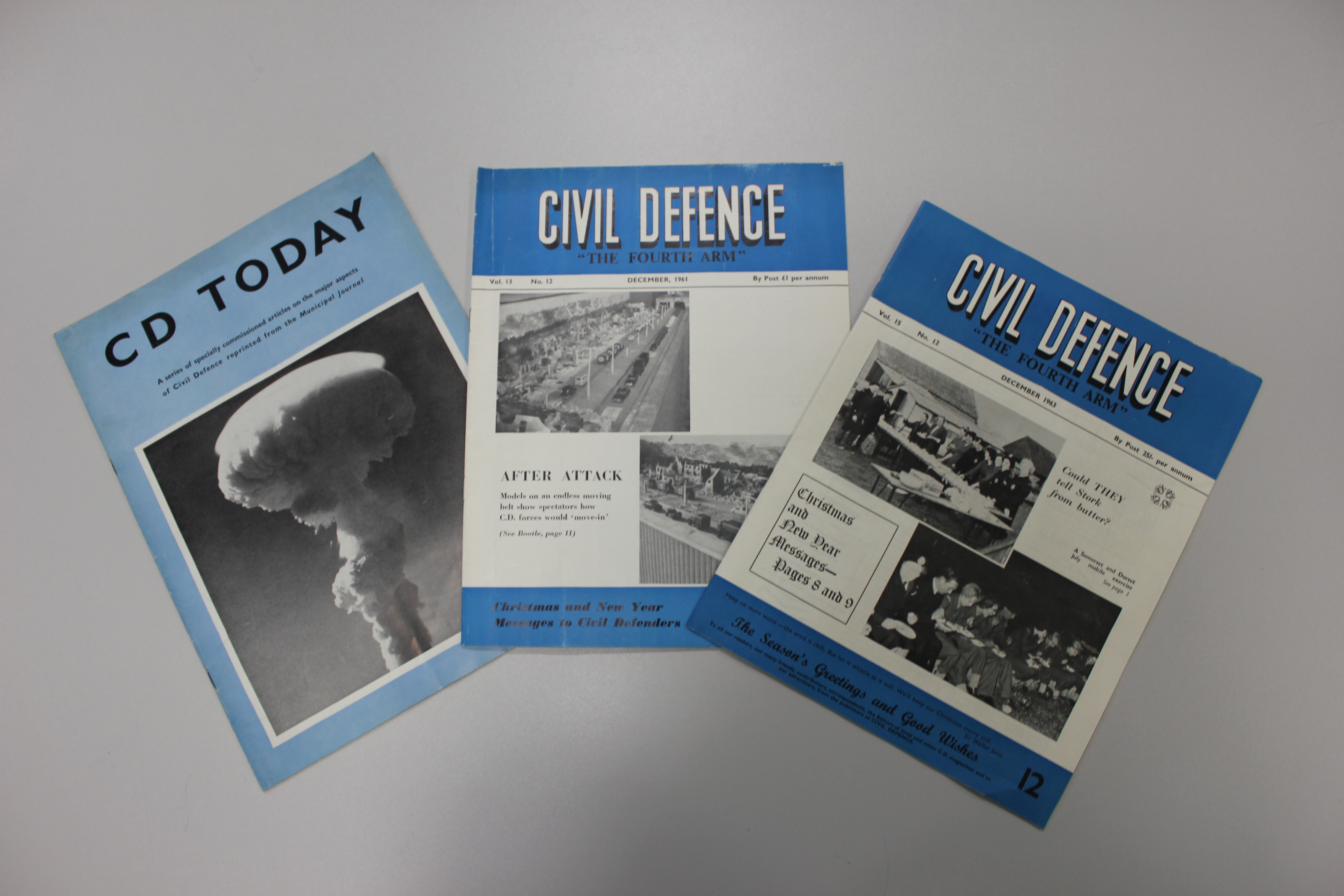
The bulk of the material is from the 1950s. There is significantly less from the early 1960s and only a couple of drawings from after 1964. It is interesting to speculate about why the files stop at this time—they don’t in themselves give any answer. Perhaps it was thought that as nuclear weapons got ever more powerful, planning how to keep the railway network functioning after an attack was pointless—everything would be destroyed beyond repair in the first few minutes.[1] As it is, the collection stands as a grim reminder of what could have been.
The full list of this archive collection can be found on our research and archive pages. See these pages for information about visiting search engine including opening hours.
[1] Context: 1961 saw the detonation of the “Tsar Bomba”, a Soviet hydrogen bomb which remains the largest man-made explosion in human history. It produced a fireball 8 kilometres in diameter, and destroyed everything in a radius 35km across.
My guess as to why the documents peter out after 1964 is the signing of the Limited Test Ban Treaty in the fall of 1963. The signatories were the United States, the United Kingdom and the U.S.S.R. The parties to this treaty agreed to end the testing of nuclear weapons in space, the atmosphere and underwater.
I know of a bomb shelter built in 1965 and it was still in use in the mid eighties. The building, I understand, is now out of use but remains, intact, on site.
The documents petering out to in early 60’s fits with the running down of the Civil Defence organisation at the same time. I passed the Civil Defence base in Sheffield on schooldays. My father’s TA regiment did exercises with them so I it was interesting to me as a schoolboy. I remember the base closing. I think that was before 1965. My understanding is we gave up on civil defence as it was no longer credible with expected devastation. Civil defence was not the same as government bunkers, however these were allowed to run down until Mrs Thatcher had new ones built ( like the one outside Nantwich). I believe Utilities and local government kept their facilities going for much longer.